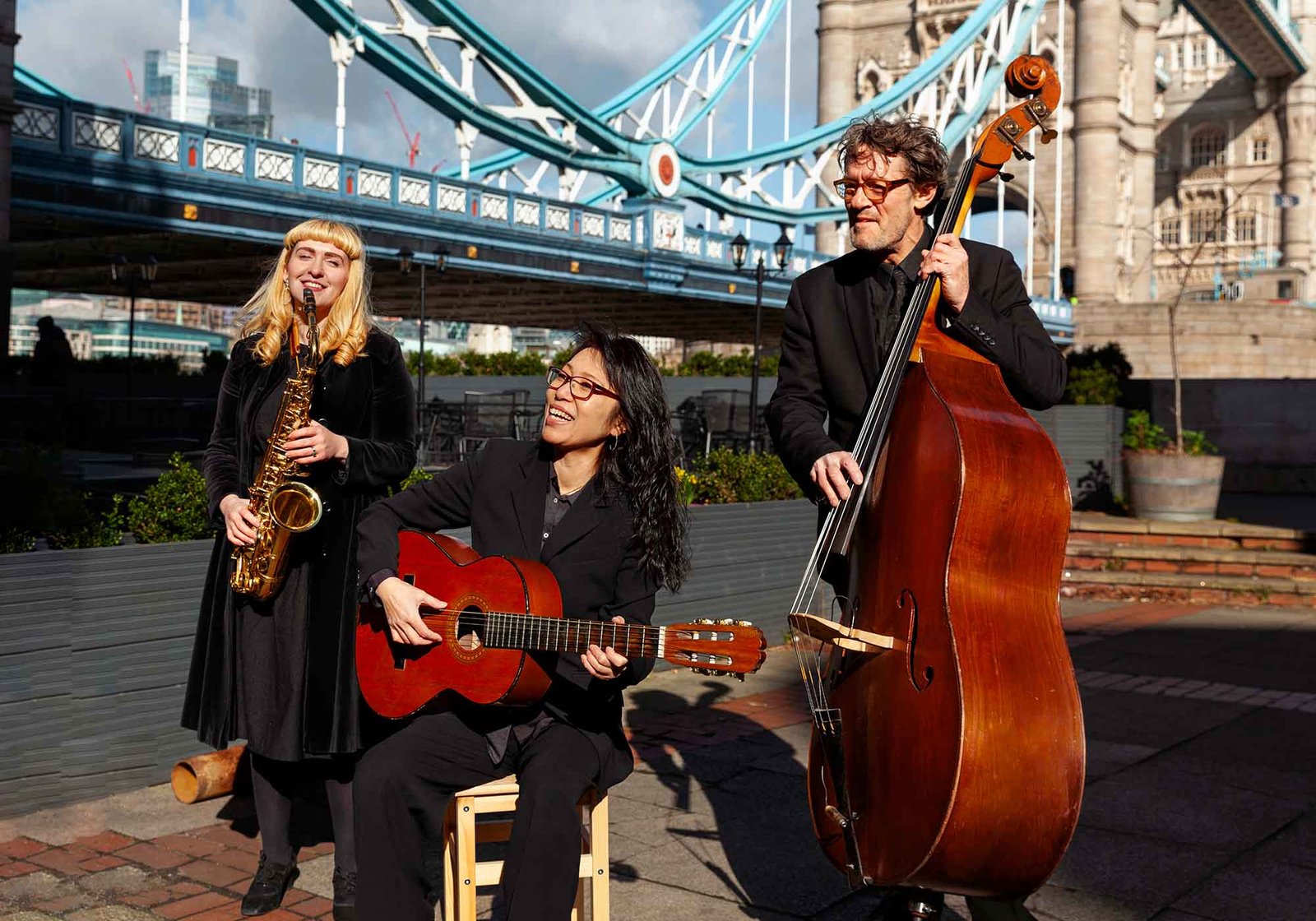-
play_arrow
MR. CITY
-
 play_arrow
play_arrow
Beat Breakdown Mia Johnson
Indian jazz represents one of music’s most fascinating cross-cultural dialogues—a sophisticated fusion where the improvisational spirit of jazz meets the ancient melodic and rhythmic traditions of the Indian subcontinent. This musical conversation has produced some of the most innovative sounds in contemporary music, challenging conventional boundaries and creating new possibilities for expression.
Historical Development
The relationship between Indian music and jazz has evolved through several distinct phases:
- 1950s-60s: Initial explorations by Western jazz musicians fascinated by Indian classical forms
- 1970s: Deeper collaborations between Indian and Western musicians during the jazz fusion era
- 1990s-2000s: Emergence of a distinctive Indo-jazz identity led by second-generation Indian musicians
- 2010s-Present: Digital-era global collaborations and new hybrid approaches
Foundational Elements
The fusion of Indian music and jazz brings together two sophisticated improvisational traditions with distinct characteristics:
Indian Classical Foundations
- Raga: Melodic frameworks with specific emotional qualities and rules for improvisation
- Tala: Complex cyclical rhythm patterns, often in unusual time signatures
- Drone: The continuous tonic note that anchors the music harmonically
- Ornamentation: Microtonal inflections and slides between notes (gamaka)
Jazz Contributions
- Harmony: Chord progressions and harmonic movement largely absent in Indian classical music
- Ensemble Interaction: Conversational interplay between musicians
- Swing Feel: Rhythmic approach that contrasts with Indian classical precision
- Instrumentation: Western instruments adapted to Indian musical concepts
Pioneering Artists and Movements
Early Explorers
- John Coltrane: Deeply influenced by Indian spirituality and raga concepts
- Don Ellis: Experimented with Indian rhythmic cycles in jazz contexts
- Joe Harriott & John Mayer: Created the groundbreaking “Indo-Jazz Fusions” ensemble in 1965
Indian Classical Masters in Jazz
- L. Shankar: Virtuoso violinist who collaborated with John McLaughlin and created the double violin
- Zakir Hussain: Tabla master who revolutionized cross-cultural percussion approaches
- Trilok Gurtu: Innovative percussionist who developed a hybrid drum/tabla setup
Contemporary Innovators
- Vijay Iyer: Pianist whose compositions reflect South Indian rhythmic concepts
- Rudresh Mahanthappa: Alto saxophonist exploring the intersection of post-bop and Carnatic music
- Rez Abbasi: Guitarist blending Pakistani influences with modern jazz
- Shankar Mahadevan: Vocalist who moves seamlessly between classical and jazz idioms
Key Ensembles and Collaborations
Several landmark projects have defined the evolution of Indian jazz:
| Ensemble | Key Members | Significance |
|---|---|---|
| Shakti | John McLaughlin, L. Shankar, Zakir Hussain | Pioneered equal dialogue between traditions |
| Remember Shakti | McLaughlin, Hussain, U. Shrinivas, V. Selvaganesh | Revitalized fusion for new generation |
| Crosscurrents | Dave Holland, Zakir Hussain, Chris Potter | Brought Indian concepts to mainstream jazz |
| Tirtha | Vijay Iyer, Prasanna, Nitin Mitta | Explored contemporary chamber approach to fusion |
| Kinsmen | Rudresh Mahanthappa, Kadri Gopalnath | Bridged Carnatic saxophone with modern jazz |
Musical Characteristics
Indian jazz is distinguished by several unique features:
- Rhythmic Complexity: Adaptation of Indian tala systems to jazz contexts
- Modal Exploration: Extended improvisations based on raga-like scales rather than chord changes
- Instrumental Adaptations: Traditional instruments modified for cross-cultural settings
- Vocal Techniques: Use of konnakol (vocal percussion) and sargam (Indian solfège)
- Structural Innovations: Compositions that blend Western forms with Indian structural concepts
Regional Variations
The Indian jazz scene reflects the country’s diverse musical traditions:
- North Indian (Hindustani) Influence: More emphasis on sustained development and gradual tempo increases
- South Indian (Carnatic) Influence: Greater rhythmic complexity and mathematical precision
- Indo-Jazz in the UK: Distinctive scene developed by British-Asian musicians
- American Indo-Jazz: Often more experimental and integrated with contemporary jazz trends
Contemporary Developments
Today’s Indian jazz scene is characterized by:
- Technology Integration: Use of electronic elements and production techniques
- Diasporic Perspectives: Second and third-generation Indian musicians bringing multicultural viewpoints
- Genre-Fluid Approaches: Incorporation of elements from hip-hop, electronic, and rock music
- Educational Institutionalization: Formal study of Indo-jazz techniques in conservatories
Cultural Significance
Beyond its musical innovations, Indian jazz represents:
- A post-colonial reclamation and transformation of musical heritage
- A challenge to Western-centric narratives about jazz development
- A model for respectful cross-cultural collaboration
- A space for negotiating complex cultural identities in a globalized world
Conclusion
Indian jazz stands as a powerful testament to music’s ability to transcend cultural boundaries while respecting distinct traditions. Neither purely Indian nor purely Western, it exists in a creative third space where musicians can explore new possibilities while honoring their roots. As global musical conversations continue to evolve in the 21st century, the sophisticated dialogue established by Indian jazz offers valuable lessons in how traditions can meet, converse, and create something genuinely new.
Written by: bobbystvnews@gmail.com
Artists charts DJ events Hits Music Pop reviews Rock
Similar posts
Recent Posts
- BREAKING NEWS: MR. CITY RADIO REVOLUTIONIZES THE HIP-HOP LANDSCAPE WITH INNOVATIVE PLATFORM
- From Viral Dance Challenges to Radio Play: How Pop Songs Go Mainstream
- The 2025 Pop Music Festival You Can’t Miss
- Indian Jazz: The Captivating Confluence of East and We
- What Goes into Creating a Hit Single? A Deep Dive into Music Production
Recent Comments
No comments to show.Search
Now on air

Throwback Jam
Presented by Ryan Taylor
Take a trip down memory lane with the best throwback pop songs of all time. From the classics to the anthems of your youth, Throwback Jam revives the tracks that still make you sing, dance, and reminisce.
close-
Trending
- BREAKING NEWS: MR. CITY RADIO REVOLUTIONIZES THE HIP-HOP LANDSCAPE WITH INNOVATIVE PLATFORM
- From Viral Dance Challenges to Radio Play: How Pop Songs Go Mainstream
- The 2025 Pop Music Festival You Can’t Miss
- Indian Jazz: The Captivating Confluence of East and We
- What Goes into Creating a Hit Single? A Deep Dive into Music Production
Copyright MR.CITY - MUSIC RADIO CITY



